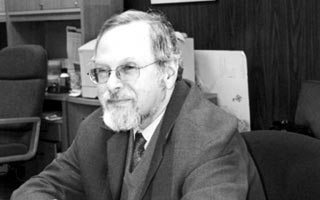 College
Presidents Series: President
Stephen Adolphus: Interboro Institute
College
Presidents Series: President
Stephen Adolphus: Interboro Institute
by Joan Baum, Ph.D.
Although the president for less than three years of Interboro Institute, a two-year business college dedicated to serving the poor, mainly minorities, Stephen H. Adolphus says he has “cared about this population all [his] life” and feels that in his relatively short tenure at the West 56th Street institution he has brought about significant change in student attitudes and performance. He is clearly a man with few words to waste. Soft spoken but at turns fiercely direct and determinedly passionate, this Yale B.A. (English) and M.S. (Urban Studies), former Peace Corps volunteer, head of English for the Secondary Schools of Montserrat, West Indies, and for 17 years Chief of the Bureau of Higher Education Opportunity Programs in Albany, has not only taken up the “challenge” to help those who have not yet learned how to appreciate themselves as learners, but is intensely focused on augmenting that challenge.
Although there are similar two-year career technical colleges in the city, Interboro (which has been around for 115 years), addresses poor and underserved minorities in special ways. Rapid-fire sharp in his assessment of the “poor job” the public high schools have done with this population, and coolly critical of societal indifference, if not hostility, Adolphus points with great pride to Interboro’s extraordinary enrollment growth over the last two years (a website refers to 1,000 students but the real number is twice that). He also notes the numerous extension locations that have been springing up. Although Interboro does advertise on subways, bus shelters, targeted radio and cable stations as well as in community bulletins, by far, the majority of students come to Interboro through word of mouth, while their communities ask for centers. Just recently, for example, Washington Heights and Yonkers have joined the Interboro enterprise and requests are pending from communities in Brooklyn and the Bronx.
So what sets Interboro aside? First, the fact that all of its students are truly poor and thus receive federal and state aid. Second, a relatively high retention rate, unusual for this type of institution and for the overwhelming number of students who never completed high school. How has this feat been accomplished? Almost before the question is out, President Adolphus is at the ready: “a rigorous support program,” centered on one-on-one tutoring. “Students come with their own learning styles,” he notes, and many, though the average age is 20-24, are parents with their own health problems and with multiple family responsibilities, including jobs. Interboro thus has full-time classes that run day and evening. Though President Adolphus has held positions at institutions where child care was an important component, he allows that Interboro cannot now accommodate such a service and that vouchers that had been set aside by the city are no longer available. One senses, however, that scarce resources only whet the president’s attitude to overcome and inculcate a love of learning. In Nepal, for example, he met people who would walk 20-30 miles just to go to school. Education was and remains the chief means by which the poor move up anywhere.
His vision embraces more than providing “job-related skills,” which most students indicate as their reason for enrolling. By the time they are established at the college, more than half (he estimates 60%) change their minds and opt for four-year degrees, seeing themselves, finally, as learners, not just workers. Interboro has thus developed articulation agreements with various four-year colleges, public and private, and has revised its curriculum to strengthen liberal arts. The Institute will, of course, continue to offer Associate of Occupational degrees to those who want specific training in medical, legal, business, security and computer fields and particularly in the school’s highly successful program in Ophthalmic Dispensing, but the upward and outward-looking president is also looking down the line at Middle States accreditation, in addition to being accredited by the New York State Regents, and to offering an Associate of Arts degrees, which will make it easier for students to transfer to four-year colleges. The Opticianry degree, for example, leads to working in an optical shop, but why shouldn’t Interboro students aspire to own their own shop and beyond that a chain?
Though his experience has given him a healthy cynical regard of what to expect in the form of adequate government assistance, President Stephen H. Adolphus remains deeply committed to the goal of providing solid education for underserved minorities. “They have the brain power; they have not yet had the opportunity to have it fulfilled.”#
Interboro Institute is at 450 West 56th Street. Its online address is: www.interboro.com
